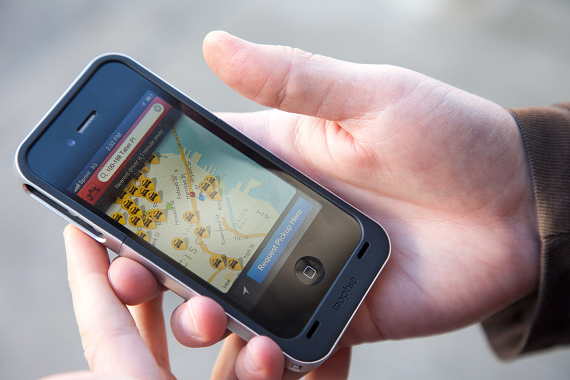

Remember when Amazon announced nearly a year ago that it wanted to start delivering packages via drone? Well, those plans have likely been scuttled for the time being, so now Amazon is now taking a decidedly less high-tech route toward getting packages to their customers quicker.
The company has begun testing out a way to deliver packages by taxi, according to a report from the Wall Street Journal on Wednesday. Yes, you read that right. A taxi.
The mental image of some Amazon delivery guy hailing a yellow cab in New York City is pretty funny (and I tried so hard to find a picture of something like that) but of course that is not how this will work. Amazon has so far been using Flywheel, a ride-for-hire app that integrates into existing taxis and fleets.
The two companies have partnered up in San Francisco and Los Angeles, in a deal that allows Amazon to summon cabs that use the software to its mini-distribution centers. The cabs are then loaded with up to 10 packages, which are all going to the same ZIP Code.
Amazon is reportedly paying roughly $5 per package for delivery within a single hour. And, according to the Journal, the deliveries were typically done in early morning hours, as to not interfere with Flywheel’s more competitive times of the day, and to attract less attention to this test.
Same day delivery competition
The answer to why Amazon is looking into doing this is two-fold: to save both time and money, as the cost of shipping has been rising for Amazon; it now encompass 8.9% of sales, up from only 7.9% in 2009.
At the same time, there has been increased competition from the likes of Google and eBay.
Google’s same-day delivery service was unveiled back in March, and was initially was only available in certain sections of San Francisco. It allows allow shoppers to purchase items online from local retailers and get their items during a time window of their choosing.
Last month, Google announced that the service has expanded to three new cities, 16 more merchants and an annual or monthly membership to compete against Amazon Prime.
By paying either $95 a year, or $10 per month, shoppers will get free same-day or overnight delivery on eligible orders over $15, as well as first dibs on delivery windows. They can also share membership with other members of their household. If they don’t want to pay for a membership, users still have the ability to pay $4.99 per eligible order.
There are some services that offer lower same-day rates, like eBay, whose eBay Now, announced in October of 2012, offers the rate of $5 on orders of at least $25.
To give you some examples of what Amazon’s same-day delivery costs, right now the company charges $8.99 per shipment, and an additional 99 cents per item, for local same day delivery. Or users can sign up for Amazon Prime for $79 a year and pay only $5.99 per shipment.
As you can see, Amazon has, by far, the highest shipping rate of all three companies; perhaps if the taxi tests work out, Amazon might be able to offer a more competitive rate.
Having the best rates and times is so important to Amazon because Prime is actually a really big revenue generator for them.
Earlier this year, a report by Morningstar analyst R.J. Hottovy estimated that Amazon had 10 million Prime subscribers by the end of 2012, up from four million at the end of 2011. The Kindle Fire played a big role in that growth, as subscriptions exploded after Amazon began offering the free 30-day trial with each Kindle Fire purchase. And while Prime subscribers only represent about 4% of Amazon’s 182 million active users, they represent 10% of all purchases. Prime subscribers also spend more than non-subscribers: $1,200 versus $500, respectively.
Amazon prime costs $79 annually, of which Amazon pockets $78. It breaks even on shipping and all of the other things it offers Prime subscribers, but that $78 per subscriber works out to make up one-third of Amazon’s consolidated segment operating income in 2012, according to the report.
Flywheel had no comment on this story. VatorNews also reached out to Amazon and we will update this story if we learn more.
(Image source: wired.com)

















